The pros and cons of Redi Rock at a glance…
Redi Rock is a premium choice among retaining wall systems, offering the appearance of natural stone or a smooth concrete finish. It’s thorough and comprehensive documentation, engineering details, construction details and directions, and customer service put it above the rest in our opinion. Redi Rock is can be one of the best retaining wall blocks to choose, depending on your project.
In this Redi Rock review, we’ll go over the following topics: Cost, Constructability, Adaptability, Appearance, Customer Support as well as a quick overview on How Redi Rock Works
How Redi Rock Works
Just in case you don’t know the basics, this section is here to help you out.
There are three main types of Redi Rock block:
- Gravity
- Positive Connection (Reinforced)
- Freestanding
Gravity and Positive Connection blocks come in three primary sizes: 28″, 41″ and 60″, where the listed dimension describes the depth of the block (from the face of the block to the back). If these sound big, its because they are. Redi Rock blocks are very heavy.
For the majority of projects, the standard gravity blocks will constitute the majority of your retaining wall. These are typical in both residential and municipal/industrial sized projects. Gravity blocks work primarily by just being really heavy and using their mass to hold back the soil behind them. Unless the retaining wall is really tall or has heavy loads like a parking lot above it, gravity blocks will probably work (don’t worry, an engineer can make sure they work for your project).
When walls start getting big, or when there is a slope or heavy loads above the wall, the positive connection blocks are better suited to the task. They look exactly like the standard gravity blocks, but they’ve got a rectangular hole cast in them, allowing strips of geogrid to be wrapped inside the block and back into the backfill, providing much more stability to the wall.
Freestanding blocks aren’t really used in retaining walls (they do work for very short ones, but you should talk to an engineer to use them for this purpose). They’re usually used as walls or to make small garden boxes. Not something we deal a lot with.
Constructability
Rating: 4.5/5
Constructability is defined as “the ease and efficiency at which something can be built”
Redi Rock truly shines in constructability. It is considered to be among the easiest to install retaining wall blocks on the market by both retaining wall contractors and engineers. On the projects we’ve worked on at Factor Geotechnical, we’ve found that walls go up faster, with less people, and with less labor with Redi Rock.

We should mention that due to the massive size and weight of Redi Rock blocks, you will require heavy machinery to lift and move the blocks into place during wall construction. With weights of standard size blocks ranging from 530 kg to 1550 kg (1160 lbs to 3420 lbs), Redi Rock should be installed by contractors with excavators and other heavy equipment available to them.
Building with Redi Rock
Construction with Redi Rock begins as it would for every other type of block system – the area where the retaining is being built is stripped of material to the depth of the gravel levelling pad, with your Engineer inspecting the exposed subgrade prior to building the levelling pad.
Where Redi Rock really begins to stand out is during the placement of blocks, where just two people are required for construction. One person operating the excavator lifting the blocks, and one assistant guiding the blocks into place. Once the blocks have been placed, small adjustments can be made by the assistant using a pry bar to line up the Redi Rock “form line”.
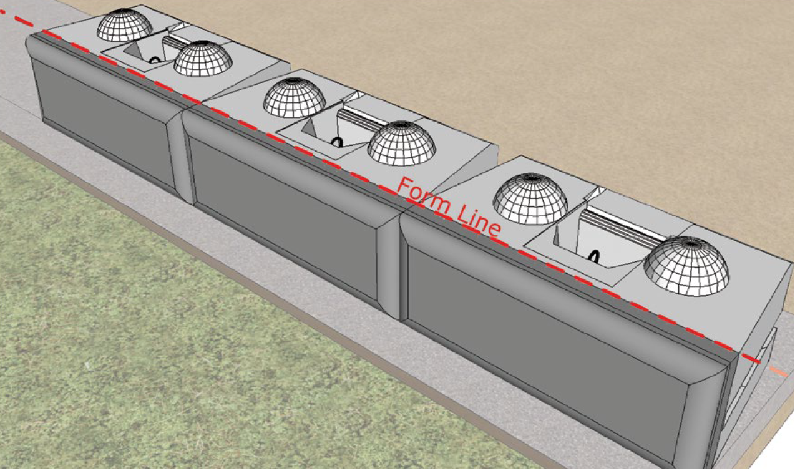
See the video below for some testimonials from contractors working with Redi Rock, as well as action shots of Redi Rock blocks being placed during construction. You can clearly see the ease and speed at which the blocks are placed.
We won’t get into the finer details of the process of building a great Redi Rock retaining wall (for that you can refer to Redi Rock’s own fantastic documentation), but once that first row of blocks is placed, levelled, and aligned properly, the rest of the wall can be constructed extremely quickly and easily.
As far as constructability goes, Redi Rock is a great choice if you’re looking for construction to be completed quickly with fewer complications. Remember, you’ll need heavy equipment to work with it though.
Adaptability
Rating: 5/5
Adaptability is defined as “the ability to accommodate different purposes”
In addition to being a very constructible block system, Redi Rock is also extremely versatile and adaptable. It has a myriad of block types, sizes, and construction details that can be applied to almost any situation you can think of.
Take a quick look through the Redi Rock Block Library to see all the different types of blocks available to your retaining wall designer. In that link you can see the standard 28″, 41″, and 60″ blocks that will typically make up the majority of your retaining wall, but also specialty blocks designed and created by Redi Rock with the purpose to make their system as adaptable to as many situations as possible.
In general, we’ve found that Redi Rock’s expansive block library and construction details are sufficient for 99% of scenarios we come across. For that other 1%, your local Redi Rock manufacturer can actually modify the blocks to your designers specification with very little difficulty due to the casting process used by the manufacturer’s of Redi Rock blocks.
We’ve only had to do this a few times, but each time it was as simple as telling the manufacturer what we needed to be done and reviewing the mockup provided before confirming them for casting. Once for a custom vertical drainage system, and the other for a curved vertical flood wall.
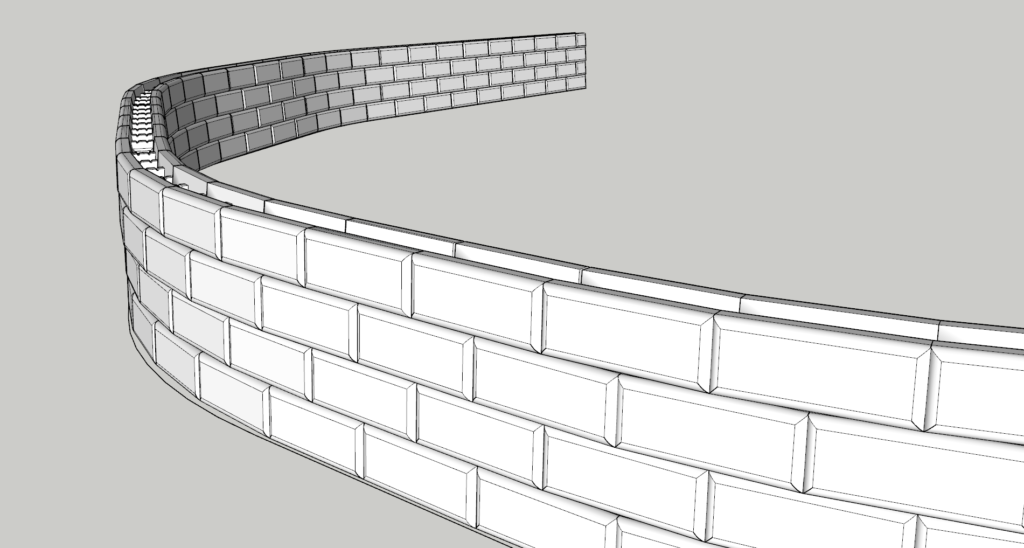
In the end, most projects will probably be fine without using any of Redi Rock’s specialty blocks so just about any block system works for most projects. But if you want to absolutely sure, or if your project is a little weird, Redi Rock likely is your best choice. Giving your designer (or yourself) the most amount of tools to solve a problem is never a bad decision.
Appearance
Rating: 4/5
Appearance is defined as “the state, condition, or style in which an object appears”
Appearance will always be a subjective matter, especially when it comes to landscaping projects. What one person likes may not be representative of what every person likes. Redi Rock understands this, and offers multiple choices of block texture so that at least one combination of texture and color will satisfy most people’s taste. (colors can be added to the concrete by your local block manufacturer during casting)
On offer are 5 different textures:
- Limestone
- Cobblestone
- Kingstone
- Ledgestone
- Smooth
In general, these textures attempt to mimic natural stone, despite being made entirely of concrete. See below for images of each. You can also check out the Redi Rock website for more in depth information and photos of completed walls, here.
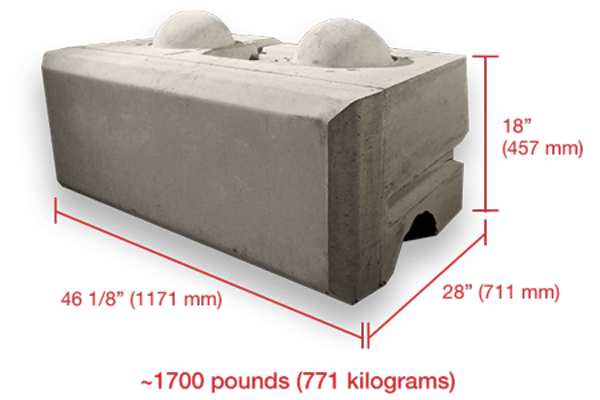
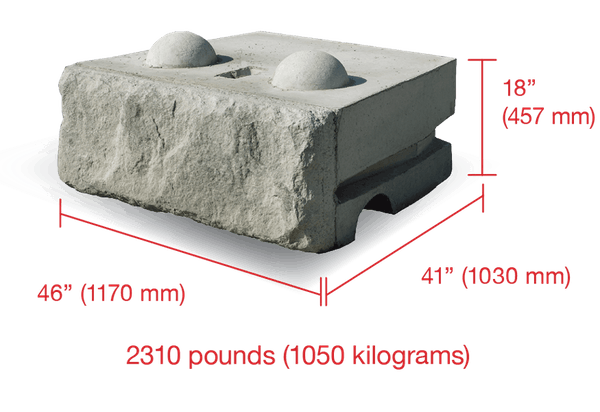
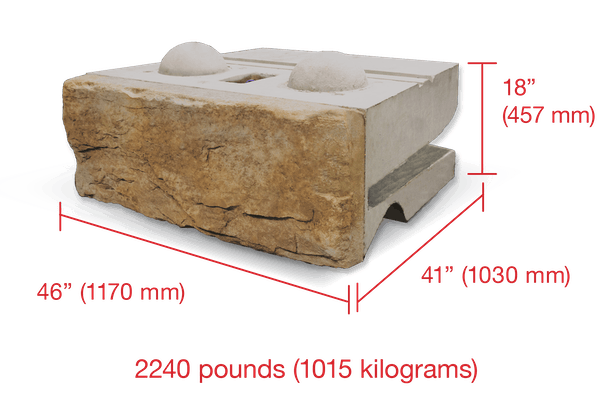

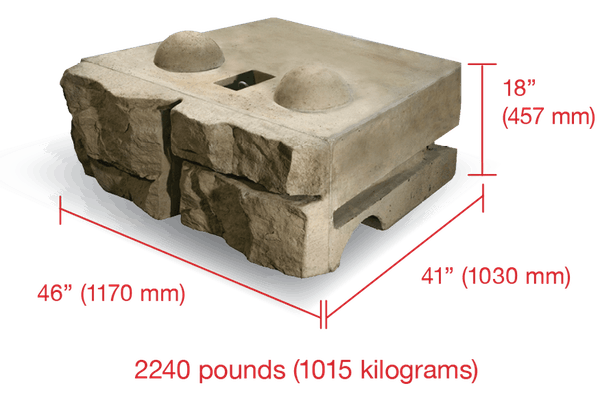
As you can see, there are a good number of options for your retaining wall project. While the Redi Rock system does a pretty good job of looking like real stone, it doesn’t look as natural as some other retaining wall systems, such as the Rosetta Outcropping system. Again, this all comes down to taste. Personally, I believe Redi Rock has among the best looking blocks available, but that choice will be up to you in the end.
Customer Support
Rating: 5/5
Customer Support is defined as “the ability, willingness, and speed at which a company provides assistance to their customers”
In general, we can usually find any information we need from the Redi Rock website, on which there are hundreds of construction details, block specifications, and an entire book dedicated to assisting designers. On the rare occasion we have needed direct assistance from Redi Rock, we’ve got it quickly, from an expert, and free of charge. Emails are returned quickly, and calls can be directed to the person you’re emailing through their email signature. We haven’t been put on hold or been forced through a telephone menu.
There really isn’t too much more to say about their customer service. It’s fantastic. Clear documentation, responsive staff, and knowledgeable experts.
Cost
Cost is defined as “the overall price of the finished product”
Rating: 3.5/5
As with any construction project, cost will be highly variable depending on a wide variety of factors. Narrowing our scope down to the most common scenarios you would see in retaining wall construction, retaining wall cost is primarily subject to the following:
- Wall height
- Wall length
- Surcharges on the wall
- Slopes above and below the wall
In general, the smaller a wall is, the less efficient Redi Rock will be. If you’re looking to build a 2 foot high retaining wall over 20 feet, Redi Rock probably won’t be your best choice. Because Redi Rock blocks are so large and require equipment to move, the initial material cost will be higher than other block systems which is why is one reason why it is so inefficient for small walls.
But where Redi Rock gains ground quickly is on larger walls, where a contractor using Redi Rock will only need 2 people and an excavator on site to build the wall, a contractor using a small block system may need five or six people to get the job done in a comparable amount of time. It is a balance that warrants specific quotes for your specific job.
Don’t be scared off by Redi Rock’s higher initial cost. Make sure you get a quote that takes into account the efficiencies that Redi Rock offers during construction.
Conclusion
Overall Rating: 4.5/5
In summary, Redi Rock is a fantastic choice for just about any retaining wall project. Multiple textures satisfy most tastes, solid engineering behind the project, thorough documentation, and great customer support. The main drawback will be the materials cost as each block is quite expensive, but you can expect to make that money back due to the efficiency of building with Redi Rock. Redi Rock is the best retaining wall block for a lot of projects.

